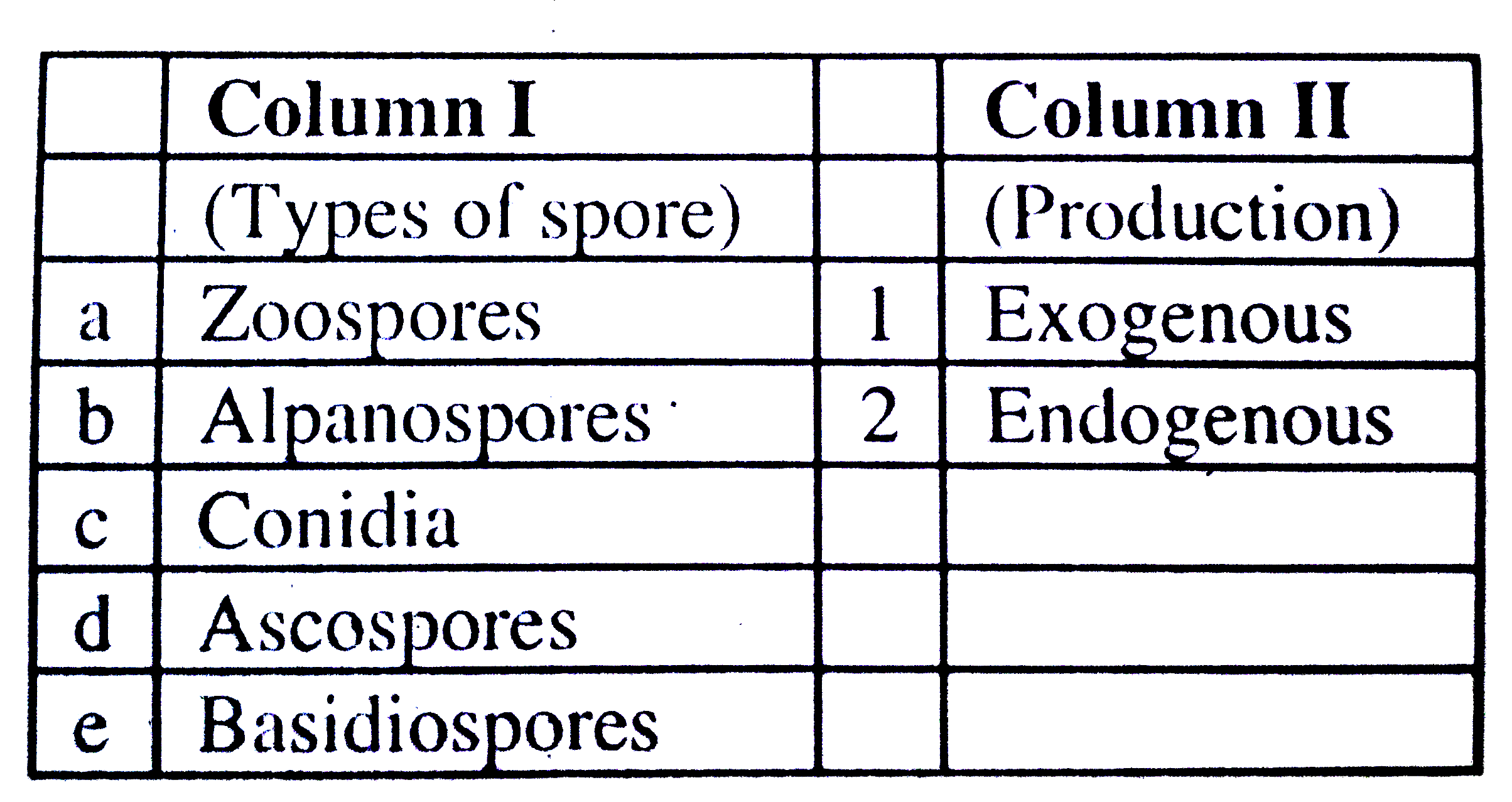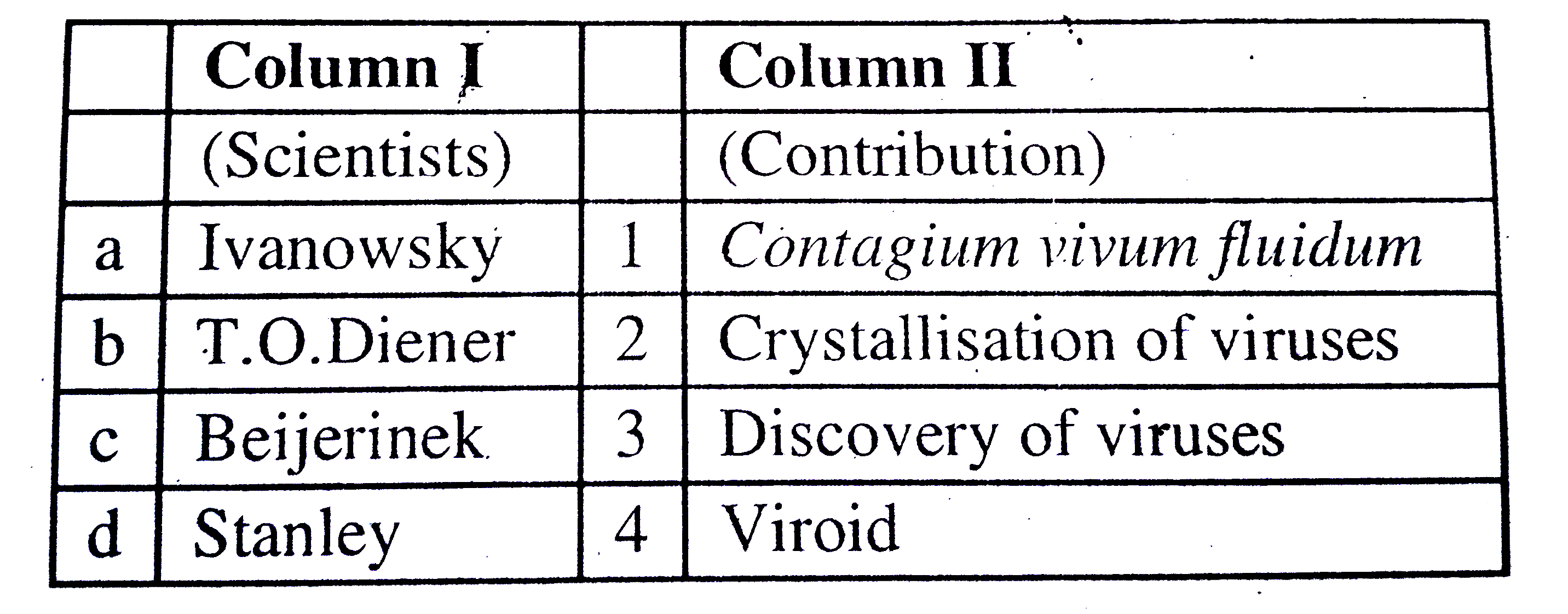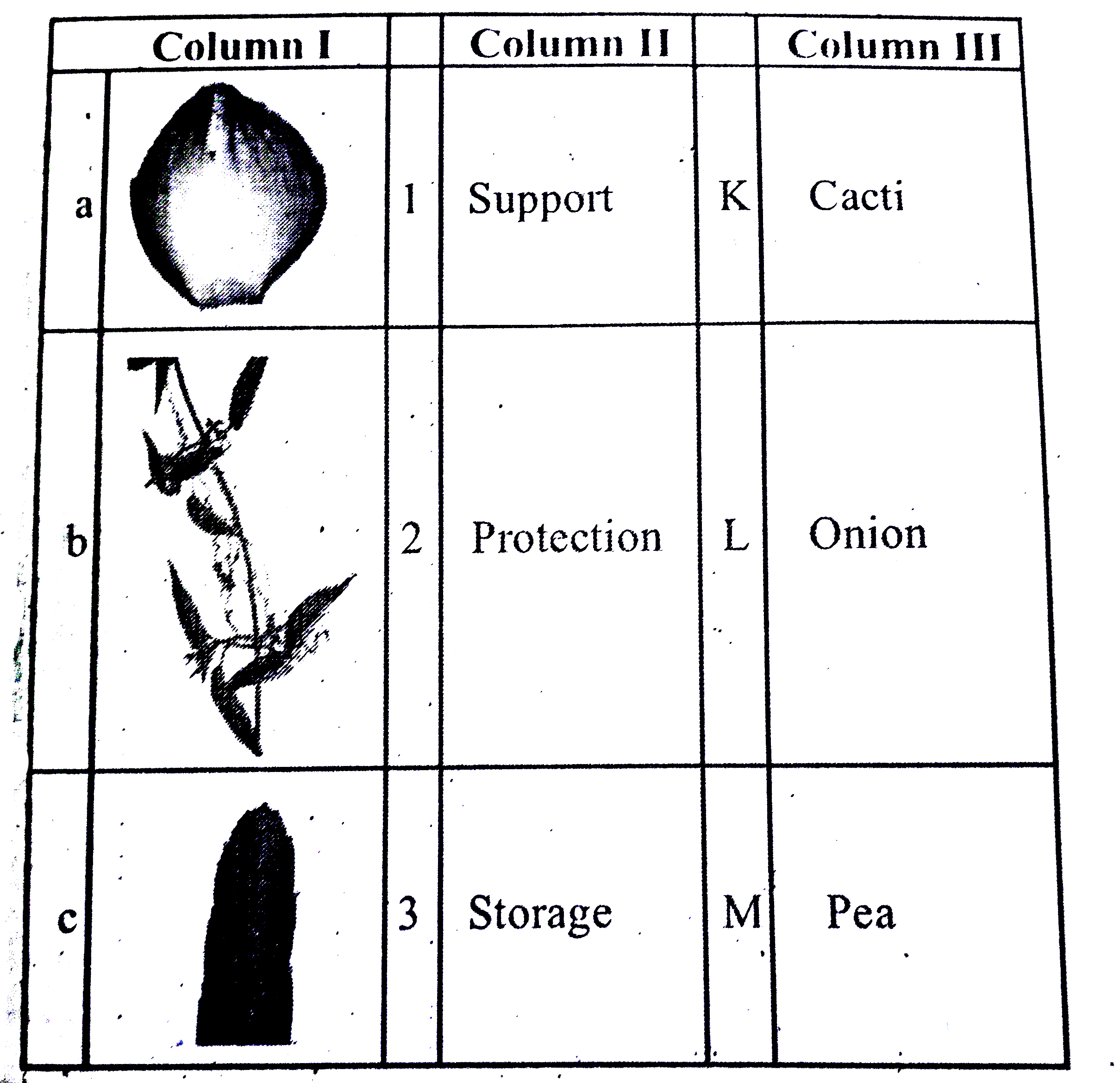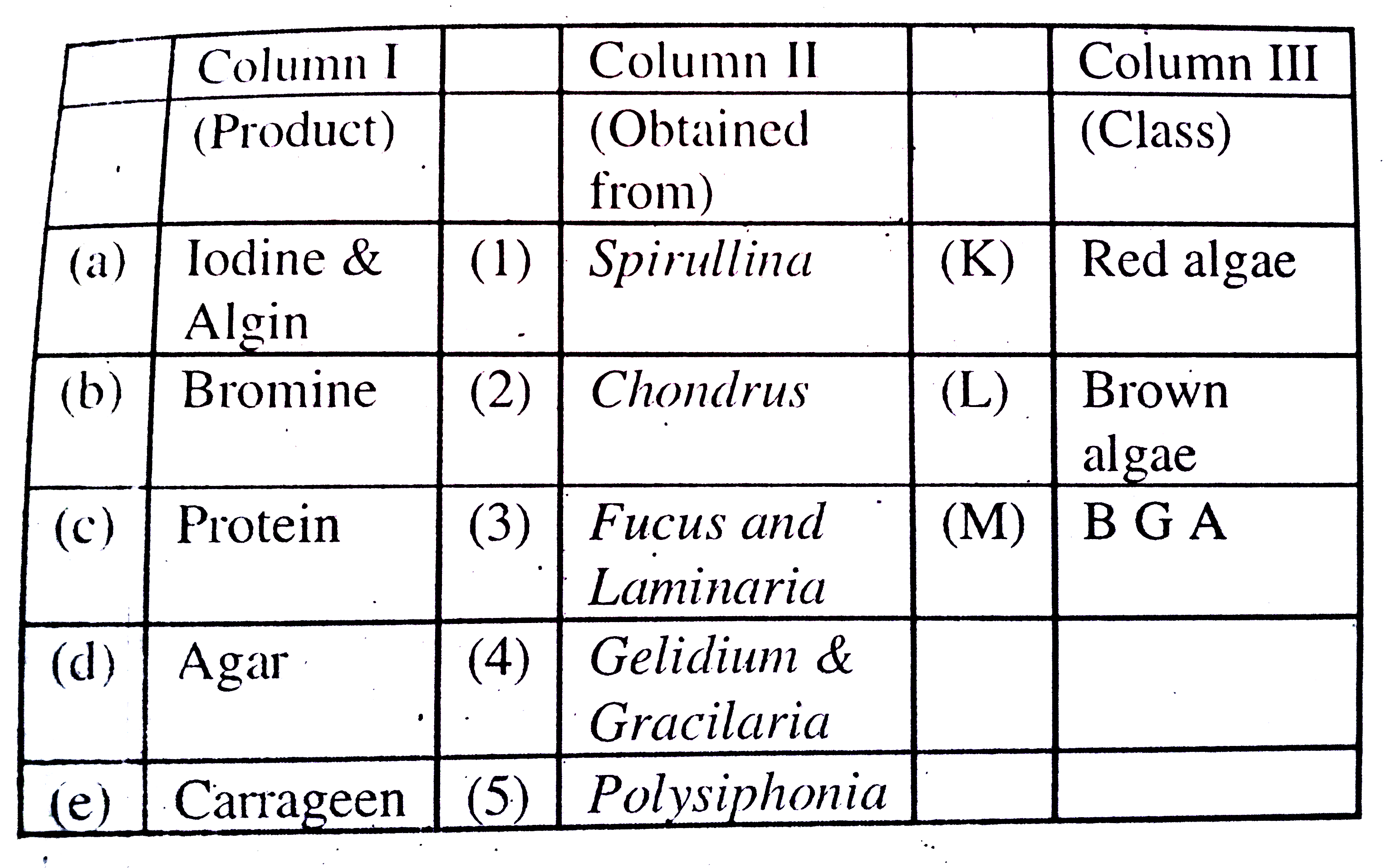Match the column -I and II and choose the correct combination from the given option.
Column IColumn II(A)Apomixis(I)Sunflower(B)Polyembryony(II)Banana(C)Parthenocarpy(III)Mango(D)Protandry(IV)Asteraceae
A - IV , B - III, C - II , D - I
A - IV , B - II, C - III , D - I
A - IV , B - I, C - II , D - III
A - I , B - II, C - III , D - IV
The correct Answer is:A
To solve the question of matching Column I with Column II, we will analyze each term in Column I and find the corresponding term in Column II based on biological concepts.
1. Identify the terms in Column I:
- A) Apomixis
- B) Polyembryony
- C) Parthenocarpy
- D) Protandry
2. Identify the terms in Column II:
- I) Sunflower
- II) Banana
- III) Mango
- IV) Asteraceae
3. Match Apomixis (A):
- Apomixis is a form of asexual reproduction that occurs without fertilization. It is commonly found in the Asteraceae family (which includes sunflowers).
- Match: Apomixis (A) → Asteraceae (IV)
4. Match Polyembryony (B):
- Polyembryony is the occurrence of multiple embryos in a single seed. Mango is a well-known example of a plant that exhibits polyembryony.
- Match: Polyembryony (B) → Mango (III)
5. Match Parthenocarpy (C):
- Parthenocarpy refers to the development of fruit without fertilization, leading to seedless fruits. Banana is a classic example of parthenocarpy.
- Match: Parthenocarpy (C) → Banana (II)
6. Match Protandry (D):
- Protandry is a condition where the male reproductive organs mature before the female organs. This is observed in members of the sunflower family.
- Match: Protandry (D) → Sunflower (I)
Final Matches:
- A) Apomixis → IV) Asteraceae
- B) Polyembryony → III) Mango
- C) Parthenocarpy → II) Banana
- D) Protandry → I) Sunflower
Conclusion:
The correct combination from the options provided is:
- A → IV
- B → III
- C → II
- D → I
- A) Apomixis
- B) Polyembryony
- C) Parthenocarpy
- D) Protandry
- I) Sunflower
- II) Banana
- III) Mango
- IV) Asteraceae
- Apomixis is a form of asexual reproduction that occurs without fertilization. It is commonly found in the Asteraceae family (which includes sunflowers).
- Match: Apomixis (A) → Asteraceae (IV)
- Polyembryony is the occurrence of multiple embryos in a single seed. Mango is a well-known example of a plant that exhibits polyembryony.
- Match: Polyembryony (B) → Mango (III)
- Parthenocarpy refers to the development of fruit without fertilization, leading to seedless fruits. Banana is a classic example of parthenocarpy.
- Match: Parthenocarpy (C) → Banana (II)
- Protandry is a condition where the male reproductive organs mature before the female organs. This is observed in members of the sunflower family.
- Match: Protandry (D) → Sunflower (I)
- A) Apomixis → IV) Asteraceae
- B) Polyembryony → III) Mango
- C) Parthenocarpy → II) Banana
- D) Protandry → I) Sunflower
The correct combination from the options provided is:
- A → IV
- B → III
- C → II
- D → I
Similar Questions
Match the columns I and II and choose the correct combination from the option given

View SolutionMatch the columns I and II, and choose the correct combination from the options given.

View SolutionMatch the columns I and II, and choose the correct combination from the options given :-

View SolutionMatch the columns I and II, and choose the correct combination from the options given :-

View SolutionMatch the columns I and II, and choose the correct combination from the options given :-

View SolutionMatch the columns I and II, and choose the currect combination from the options given :-

View SolutionMatch the columns I, II and III and choose the correct combination from the option given :

View SolutionMatch the columns I and II, and choose the correct oabination from the options given.


View SolutionMatch the column I, II and III and choose the correct combination from the options given :-

View SolutionMatch the columns I, II and III, and choose the correct combination from the options given :-

View Solution
